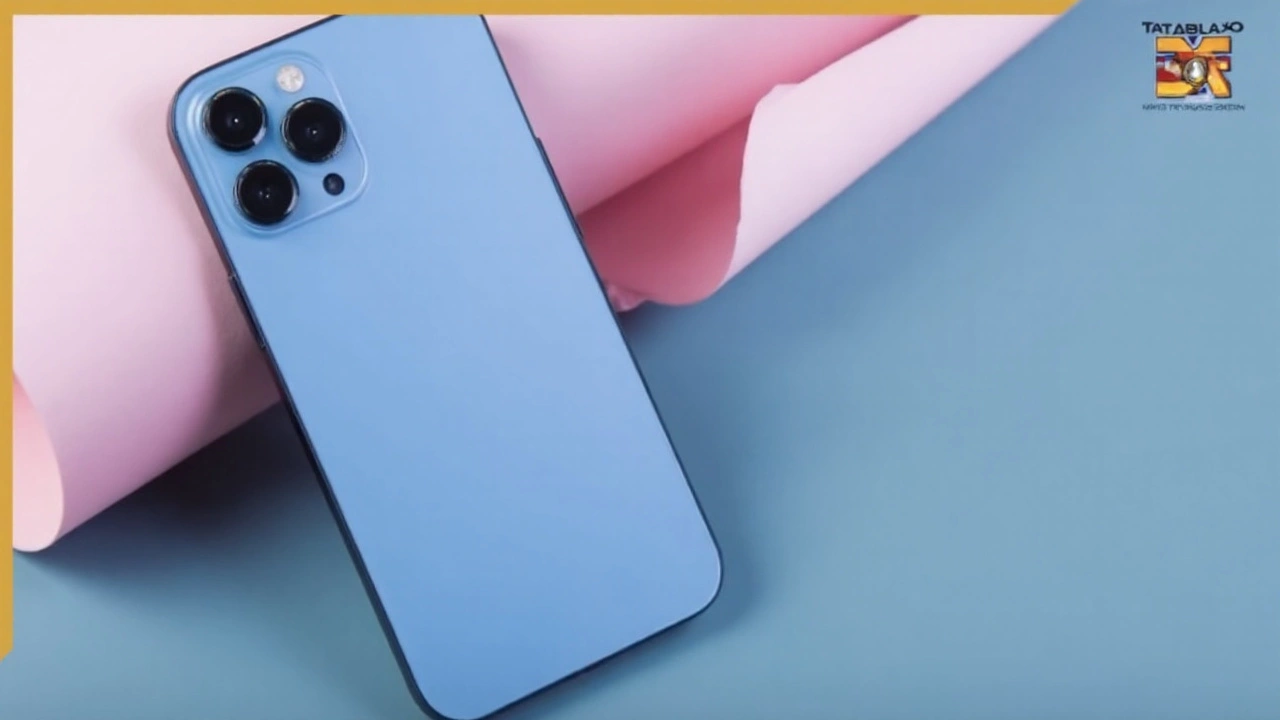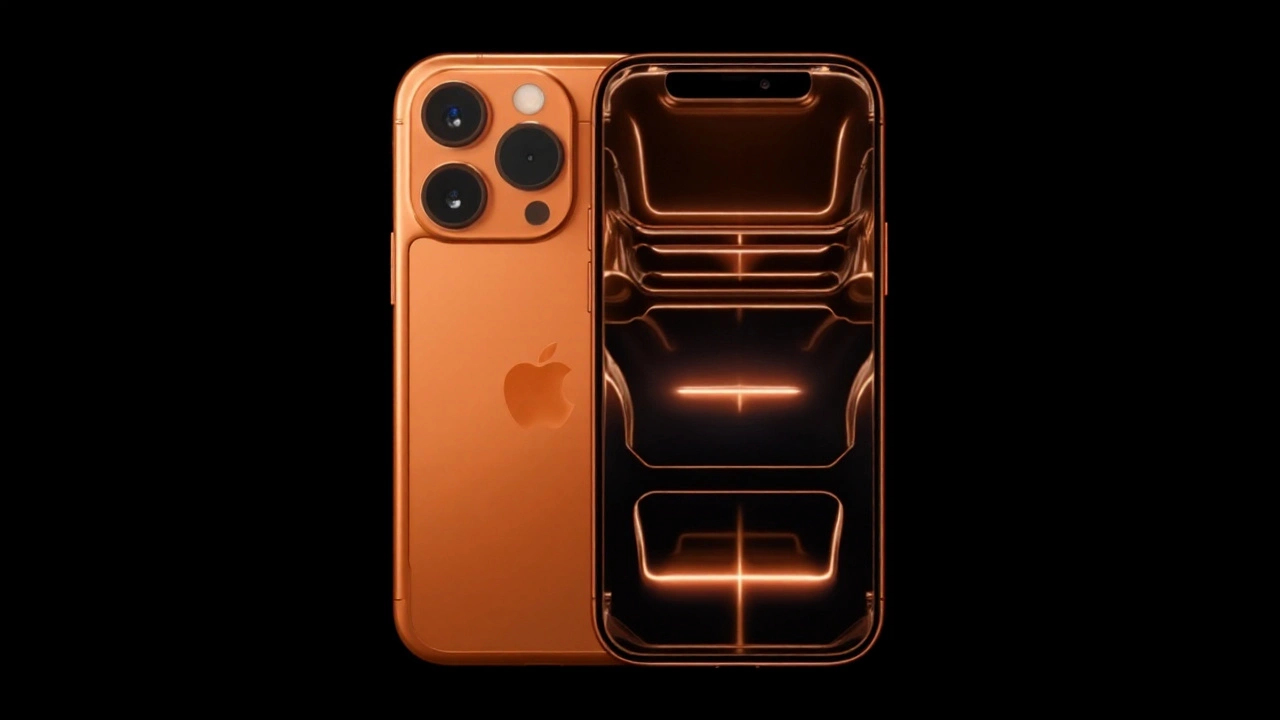Five years is a long time in smartphones. Apple just rewrote its Pro playbook. The new iPhone 17 Pro and iPhone 17 Pro Max step out with a fresh unibody look, a brighter screen you can see under harsh sun, a new A19 Pro chip aimed at heavier AI tasks, and a vapor chamber to keep heat in check. Battery life is up too, helped by roomier internals.
Apple isn’t moving a few knobs here. This is a full rethink—materials, thermal design, wireless tech, and cameras all got real upgrades that answer the usual complaints about heat, longevity, and pro-grade video tools.
- 6.3-inch and 6.9-inch Super Retina XDR displays with 120Hz ProMotion and Always-On
- Peak outdoor brightness of 3000 nits
- Ceramic Shield 2 with stronger scratch and crack resistance
- A19 Pro chip with new neural accelerators and a 16-core Neural Engine
- Unibody 7000‑series aluminum and an Apple-designed vapor chamber
- N1 wireless chip with Wi‑Fi 7, Bluetooth 6, and Thread
- Longest optical reach yet: up to 200mm, with 40x digital zoom
- ProRes RAW video and expanded pro controls
- Storage up to 2TB on Pro Max
- Silver, Cosmic Orange, and Deep Blue finishes
Design, display, and performance take a big leap
The design change is obvious at a glance. Apple has moved to a unibody frame made from aerospace‑grade 7000‑series aluminum. The tighter construction isn’t just for looks—it frees up internal volume for larger batteries and gives the vapor chamber more room to do its work. That should mean steadier performance under load, fewer throttling surprises, and less heat pooling during gaming, shooting 4K video, or long navigation sessions.
Durability gets a lift as well. Ceramic Shield 2 now covers the display and Apple claims three times better scratch resistance and four times improved crack resistance versus older models. If you’ve lived through a spiderwebbed screen after one bad drop, this upgrade will speak to you.
The displays are tuned for real-world use. The 6.3-inch panel on the iPhone 17 Pro and the 6.9-inch panel on the Pro Max both support ProMotion at up to 120Hz and Always-On. Peak outdoor brightness hits 3000 nits, so reading maps or framing shots in direct sun should be much less of a squint-fest. The Pro Max runs at 2868-by-1320 resolution, keeping the same 460 ppi density as the smaller model so text and UI elements look consistent between sizes.
Under the hood sits the A19 Pro. It pairs a 6‑core CPU and a 6‑core GPU with new neural accelerators and a 16‑core Neural Engine. Apple is pitching smoother sustained performance and faster on-device AI. What does that mean in practice? Heavier image processing in the camera pipeline, quicker background tasks like speech transcription, and snappier features that rely on machine learning—all without sending your data to the cloud.
Thermals have been the quiet villain of high-end phones. Apple’s own vapor chamber, integrated into that unibody design, aims to spread heat fast and evenly. Expect fewer hot spots, less throttling during extended video recording, and better comfort when you’re playing intensive games or using navigation with the screen on full blast.
Wireless gets a forward push. A new N1 chip adds Wi‑Fi 7, Bluetooth 6, and Thread. Wi‑Fi 7 is built for higher multi‑gig speeds and lower latency on supported routers, so big app downloads, cloud backups, or streaming ProRes files over your home network should feel quicker. Thread gives the phone a seat at the table of modern smart-home gear, acting as a low-power, reliable way to connect devices without fussy setup.
Battery life is the quiet star. By carving out more internal space and improving heat spread, Apple says these are the longest-lasting Pro models yet. Heat is the enemy of batteries; better thermal management usually means fewer capacity dips over time. For anyone who shoots video, navigates all day, or travels often, that combination—bigger cells and cooler operation—matters more than a flashy spec.

Cameras, video tools, and the India launch window
The camera stack is built for reach and control. The Pro models stretch to Apple’s longest optical reach yet at 200mm, useful for field sports, wildlife, or stage events where you can’t get close. Digital zoom now reaches up to 40x. No, digital zoom doesn’t replace optical optics, but with better processing from the A19 Pro and the Neural Engine, you should get cleaner detail and less mush in the mid-zoom range.
On the video side, ProRes RAW returns with more headroom for color grading and exposure tweaks in post. For creators, that means tighter control over highlights and skin tones and less risk of clipping in high-contrast scenes. The advanced video tools are clearly aimed at filmmakers and content pros who want to keep shooting on the phone instead of switching to a dedicated camera for B‑roll.
For everyday shooters, the mix of faster processing, improved stabilization, and that brighter display makes a difference. Framing becomes easier outdoors, tracking fast subjects is less hit-or-miss, and low-light autofocus usually benefits from stronger AI-assisted processing. Apple’s pitch is simple: give users more usable reach while keeping pro-level latitude in video.
Storage tiers reflect that pro angle. On the iPhone 17 Pro, you can pick 256GB, 512GB, or 1TB. The Pro Max adds a 2TB option, a nod to users who record a lot of ProRes footage or prefer keeping their entire photo library offline. If you’ve ever juggled files to free up space mid‑shoot, you know why this matters.
Colors keep it restrained but fresh: Silver for the classic look, Deep Blue for a darker tone, and Cosmic Orange if you want something that pops without screaming. The finishes pair well with the clean lines of the new unibody frame.
In India, the iPhone 17 Pro starts at ₹82,900 for the 256GB model and ₹1,02,900 for the 512GB variant. Pre‑orders opened on September 9, 2025, and general sales begin September 19, 2025. Expect the usual high demand for the larger Pro Max, especially the 1TB and 2TB variants, which tend to move fast among creators and power users.
What’s the bigger picture? Apple is answering a few consistent pain points. Heat has been a thorn for years; the vapor chamber is a direct response. Battery anxiety is real; a roomier design and better thermals should help. Connectivity is moving forward; Wi‑Fi 7 and Thread future‑proof the phone for faster networks and smarter homes. And for pros, a longer optical reach plus ProRes RAW keeps the iPhone squarely in the conversation as a primary camera for many projects.
If you upgrade every few years, this cycle looks like a strong jump rather than a routine spec bump. The design is new, the thermal approach is new, and the wireless platform is ready for the next wave. For everyone from mobile filmmakers to people who just want a cooler, longer‑lasting phone, that combination may be the headline feature you can’t list on a spec sheet: staying fast and comfortable when it counts.





